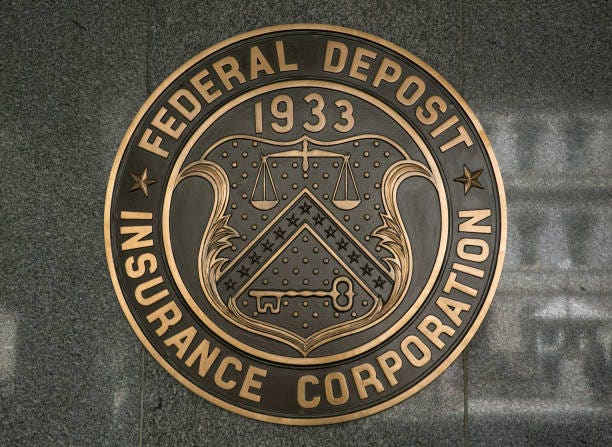In the U.S. financial system, trust and stability are everything. Consumers need to know their money is safe, and lenders must operate with sound practices to avoid financial crises. One of the key players ensuring this balance is the Federal Deposit Insurance Corporation (FDIC).
While many know the FDIC for protecting bank deposits, its role extends far deeper—particularly in overseeing financial risk within the banking sector. From managing systemic risk to monitoring individual institutions, the FDIC plays a critical role in safeguarding the nation’s financial health.
This article explores how the FDIC contributes to financial risk oversight and what that means for banks, mortgage lenders, and consumers in 2025.
The Federal Deposit Insurance Corporation (FDIC) is an independent agency of the U.S. government, established in 1933 in response to widespread bank failures during the Great Depression. Its core mission is to:
- Protect depositors
- Maintain public confidence
- Promote financial system stability
Most importantly, the FDIC insures up to $250,000 per depositor, per insured bank, providing a crucial safety net for individuals and businesses alike.
Beyond deposit insurance, the FDIC is a leading regulator and risk manager. Here’s how it operates:
The FDIC oversees over 4,000 insured banks across the U.S., with a focus on:
- Credit risk
- Liquidity risk
- Operational risk
- Market risk
- Compliance risk
Through regular on-site examinations and off-site monitoring, the FDIC ensures that banks are operating safely and managing risks effectively.
To assess the resilience of financial institutions, the FDIC conducts stress testing, simulating adverse economic scenarios such as:
- Market crashes
- Interest rate spikes
- Widespread loan defaults
These tests help identify vulnerabilities before they lead to crisis, especially in mortgage portfolios and commercial lending.
If a bank becomes insolvent, the FDIC steps in as a receiver to resolve it in an orderly way, protecting depositors and minimizing systemic impact. This resolution process includes:
- Selling assets
- Paying creditors
- Managing failed portfolios (including mortgages)
This function is essential to maintaining financial system stability.
The FDIC manages the Deposit Insurance Fund (DIF), which covers insured deposits. The DIF is funded by premiums paid by banks, not taxpayers. A healthy DIF ensures that in the event of a failure, depositors are protected—thus reducing panic and preserving economic stability.
The FDIC evaluates whether banks have:
- Adequate capital reserves
- Sound lending policies
- Effective governance and risk control frameworks
- Cybersecurity preparedness
This broad oversight ensures that banks, including mortgage lenders, are not taking on excessive or poorly managed risks.
The FDIC plays a direct role in monitoring risks within the mortgage lending ecosystem, including:
- Underwriting standards: Are banks following prudent lending practices?
- Loan concentrations: Are banks overexposed to certain asset types or geographic areas?
- Foreclosure and default trends: Is the institution prepared for credit shocks?
FDIC examiners review these areas closely to ensure that lending portfolios are diversified, well-managed, and resilient.
In 2025, the FDIC is focused on emerging risk areas such as:
- Rising commercial real estate exposure
- Climate-related financial risks
- Fintech partnerships and third-party vendor risks
- Cybersecurity threats targeting banking systems
Lenders must be prepared for increased scrutiny and demonstrate strong risk controls in these areas.
To stay aligned with FDIC oversight and reduce financial risk, banks and lenders should:
Ensure your institution holds adequate reserves to absorb losses.
Monitor credit, market, and operational risks through robust internal systems.
Use stress testing to evaluate how your loan portfolio would perform under adverse conditions.
Stay current with consumer protection laws, fair lending regulations, and anti-money laundering protocols.
Invest in cybersecurity infrastructure and third-party risk management strategies.
The FDIC isn’t just a deposit insurer—it’s a cornerstone of financial risk oversight in the United States. From monitoring the soundness of individual banks to resolving failing institutions, the FDIC plays a vital role in ensuring trust, transparency, and resilience in the financial system.
For lenders, especially those in the mortgage space, understanding and aligning with FDIC expectations is not only about compliance—it’s about building a safer, stronger financial future.

